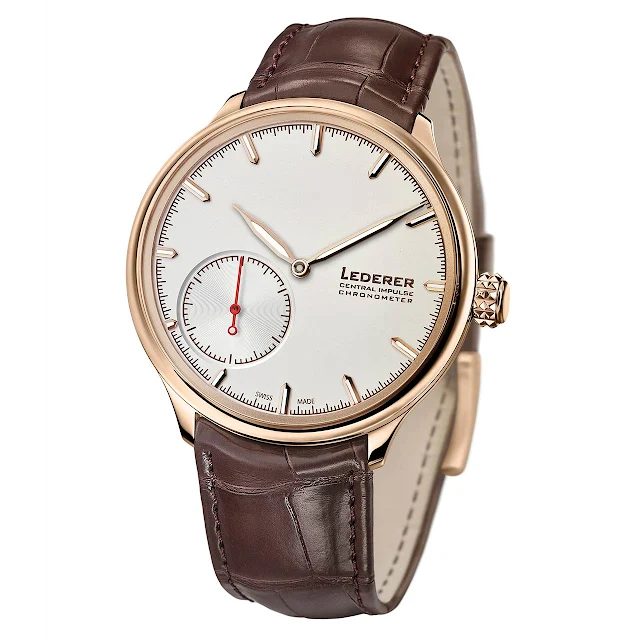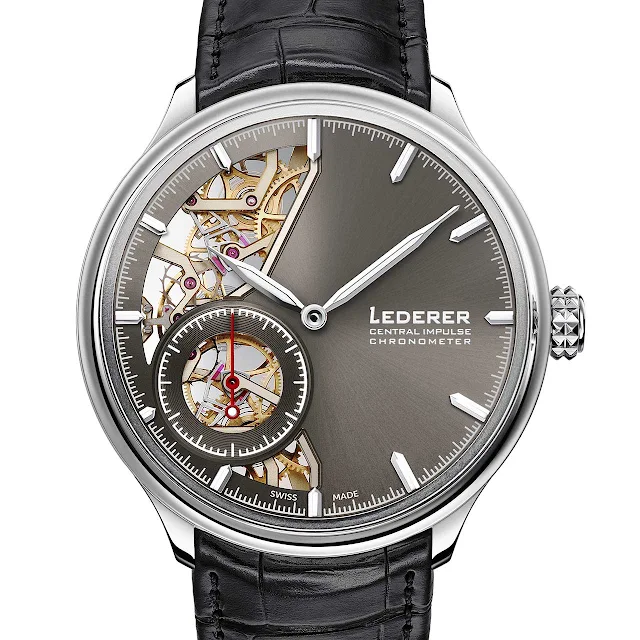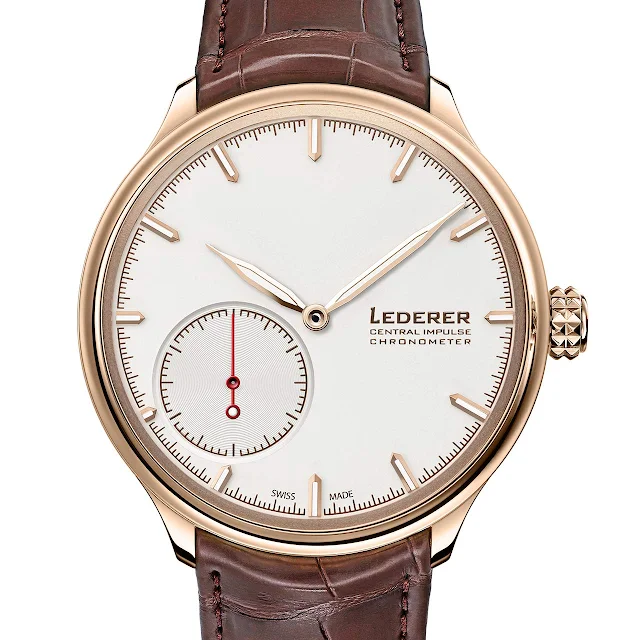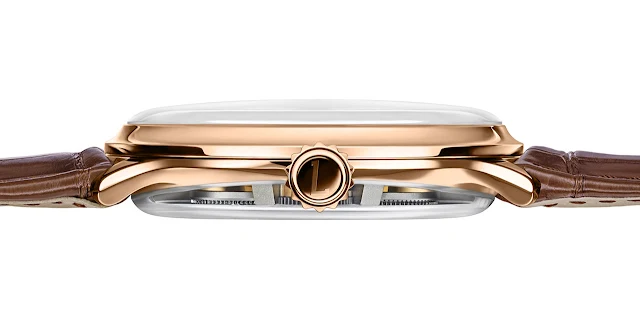Bernhard Lederer presented the Central Impulse Chronometer implementing a natural escapement. Price price of CHF 138,700. GPHG2020. Grand Prix
Award-winning German watchmaker Bernhard Lederer (some of our readers will probably remember his Gagarin Tourbillon) recently presented an exceptional timepiece that implements the principle of the natural escapement together with two 10-second constant-force mechanisms as conceived by John Harrison in 1756.
Its Central Impulse Chronometer is part of a new collection entitled ‘Tribute to the Masters of Escapements’, a limited series of precision chronometers designed and developed to honour those who set true milestones in the advancement of the escapement, one of the key watchmaking inventions.
The escapement is essentially the watch's internal system for counting the passage of time. On one side, a barrel supplies energy to the gear train, without any regulation. On the other, a balance wheel, aided by the regulating balance spring, oscillates at a rhythm that must be as regular as possible. Between the two, you have the escapement which is situated as closely as possible to the balance-wheel so that its oscillations can be registered and the energy from the barrel transmitted to it. At once an engine and a counting system, it is by far the most sophisticated assembly inside the watch. It determines timekeeping precision, and to a large degree the power reserve.
The escapement is said to be natural when the impulse is transmitted as directly as possible from the
escapement wheel to the balance wheel. Breguet had imagined a system with two escape wheels operating alternately, but linked to each other by an additional pair of wheels, though these were quite energy demanding.
In the 1980s, master watchmaker George Daniels continued Breguet's work and devised his own version of the natural escapement with some limitations: it operated at the very low frequency of 2 Hz and was not self-starting, making it necessary to shake the watch to get it going. Also, it used a large number of components, thus increasing the weight and, consequently, the energy required to power the timekeeper.
The result of several years of research in the footsteps of Abraham-Louis Breguet and George Daniels, Lederer’s natural escapement is composed of two escapement wheels operating in alternation and connected to an anchor that is absolutely one of a kind.
To achieve the absolute precision of his hand-wound Caliber 9012 beating at the frequency of 3 Hz (21,600 vibrations per hour) with an autonomy of 58 hours, Bernhard Lederer installed these two escapement wheels at the end of two separate gear trains, each with its own barrel and its own 10-second constant force remontoire.
The internal friction of the escapement are reduced to a minimum. The contacts with all the components it guides are extremely light and gentle making this escapement remarkably quiet. it emits a unique sound every 5 seconds each time one of the two alternating constant force remontoires springs into action. The components are made from titanium instead of the more traditional steel. Lighter, stiffer and with a lower inertia, they are quick to restart and much more energy-efficient.
The balance wheel’s rhythm remains virtually unaffected by the contact with the anchor. It receives the force necessary for each impulse, itself an assurance of isochronism and therefore of timekeeping precision. The quantity of energy delivered is controlled by two independent gear trains, one for each escape wheel. Each of these kinetic chains has its own dedicated barrel.
As if it was not enough, Bernhard Lederer inserted a constant force remontoire consisting in accumulating an energy buffer in a spring similar to the one in the barrel, but one that is much shorter and lighter. Recharged in 10-second intervals, it capitalizes on the fact that the force of an unwinding spring is stronger when it is tightly wound up, and weaker when it is almost completely unwound. This variation in torque has a direct impact on isochronism. The remontoire equalizes the force by ensuring a very homogeneous torque profile, with extremely minute variations in the energy delivered to the balance wheel.
Housed in an understated 44 mm round case, the Central Impulse Chronometer is available in two variations. The first comes in pink gold with an light grey, opalescent dial featuring a large circular-finished small seconds subdial at 8 o'clock. The shape of the rose gold beveled hands is a hybrid of leaf and baton.
The complexity of its movement remains hidden from view until the watch is turned over. Here, a sapphire crystal case back reveals the architecture of the Caliber 9012, which is symmetrical, angled, and widely openworked.
The second version in white gold is characterised by a slate grey sunburst openworked dial revealing the final part of the gear train, the remontoires and the escapement, i.e. the core of the Central Impulse Chronometer.
Matched to brown or black alligator leather straps and water resistant to 30 metres / 100 feet, the Bernhard Lederer Central Impulse Chronometer has a price of CHF 138,700. ledererwatches.com



















COMMENTS